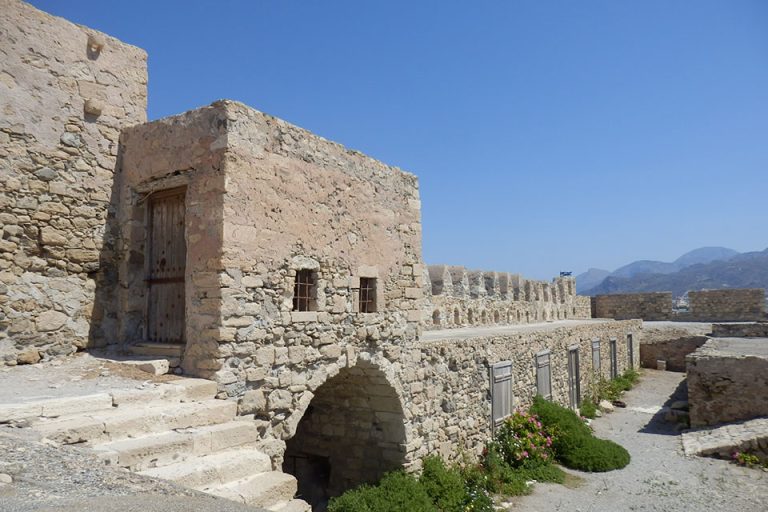On the northern sea wall of Ierapetra’s harbor, the Kales Fortress stands as a monumental testament to Crete’s storied past. Constructed by the Venetians to surveil the seas for enemy ships and shield the harbor from Arab pirates, this fortress encapsulates the confluence of architectural simplicity and historical depth, built upon the remnants of an even older fortification.
The Genesis of Kales Fortress:
Legend has it that the fortress was initially erected in 1212 by a Genoese pirate named Pescatore, serving as a strategic base for his marauding expeditions. However, the first official mention of the fortress dates back to a Venetian Senate document from April 13, 1307, marking the commencement of its construction as a defensive bulwark. In 1626, Francesco Morosini fortified the structure further, responding to the increasing threats of the era.
Trials Through Time:
The fortress has withstood the ravages of time, natural disasters, and numerous sieges. A 16th-century account recalls significant damage inflicted by the aftershocks of a catastrophic earthquake in 1508, showcasing the fortress’s resilience. Turkish invasions further tested its fortitude, leading to several modifications under Ottoman rule, yet its essential Venetian characteristics were meticulously preserved.
A Symbol of Resistance and Preservation:
Under Turkish dominion, the fortress was adapted and improved, yet its fundamental purpose as a defensive edifice remained unaltered. This enduring utility, along with its robust construction, has facilitated the fortress’s preservation through to the 19th century. The Kales Fortress, now restored, not only embodies the architectural and military ingenuity of its time but also stands as a poignant reminder of Ierapetra’s turbulent history and the broader Cretan struggle for sovereignty.
Conclusion:
Today, the Kales Fortress invites visitors to traverse the annals of history, offering a glimpse into the maritime strategies and defensive tactics employed by the Venetians and later by the Ottomans. Its imposing structure, devoid of ornamental frills, speaks volumes of a bygone era where functionality and strategic advantage dictated architectural choices. As we walked the ramparts of the Kales Fortress, we were enveloped by the echoes of centuries past, each stone narrating tales of siege, survival, and the indomitable Cretan spirit.
Sorry, no records were found. Please adjust your search criteria and try again.
Sorry, unable to load the Maps API.
